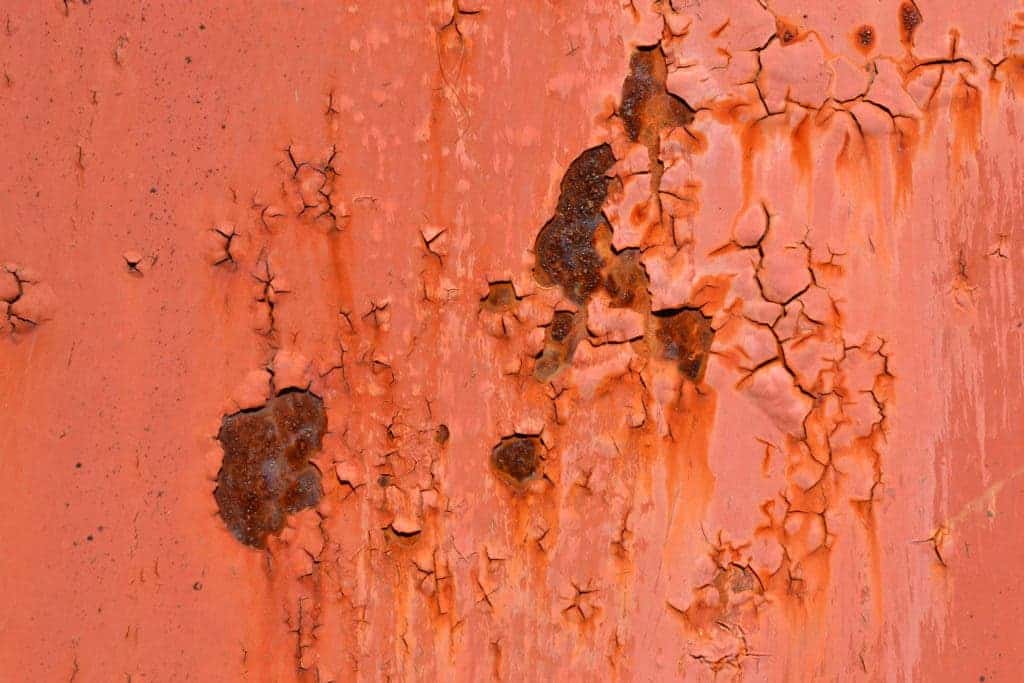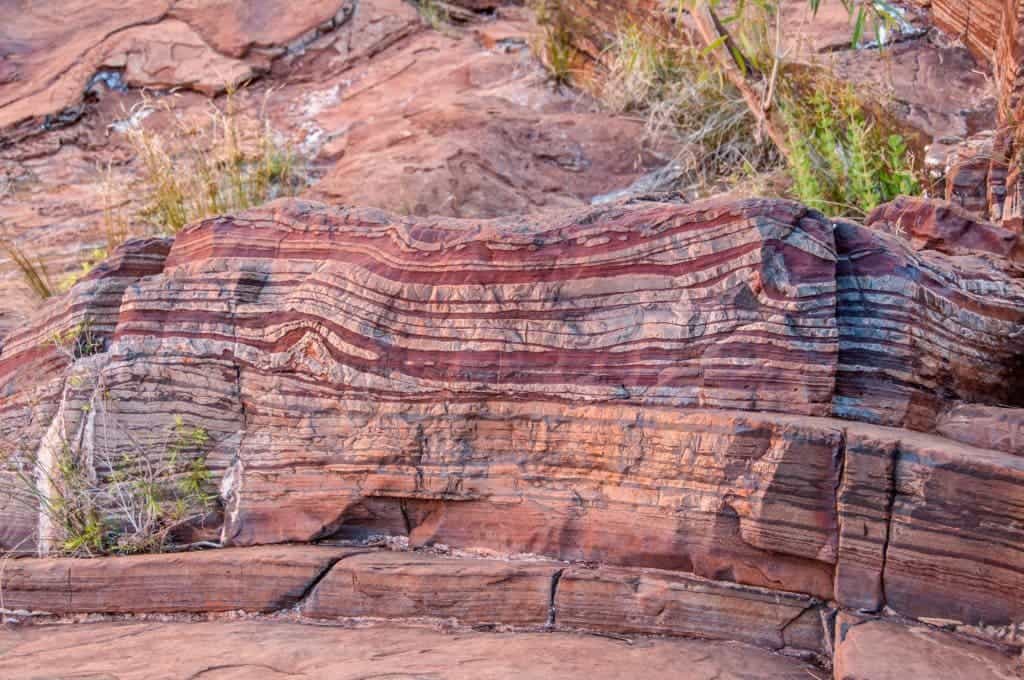
Rust, patina, fire, rancid food — they all have oxidation in common. So let’s take a look at exactly what that is.
Life as we know it today couldn’t exist without oxygen. So, we’re lucky that there’s so much of it around. But this reliance on oxygen has been, at times, called a ‘deal with the devil’. The same property that makes the gas vital to most Earth-borne life — its unquenchable thirst for electrons — slowly kills the very life it supports.
Today, I thought we’d take a deeper look into this life-giving-life-taking dynamic by asking:
What is oxidation?
Oxidation is the process in which one atom strips electrons from another, claiming them for its own. It is one side of redox-type reactions. These reduction-oxidation reactions stand apart from other types of chemical interactions because they involve changes to multiple atoms’ electron envelopes. Reduction is the process via which an atom loses electrons to another.
The term draws its name from oxygen because it was the first known oxidative element. In fact, for quite a good stretch of time in the 18th century, ‘oxidation’ referred solely to the addition of oxygen to a compound. A good example of this traditional definition for oxidation can (annoyingly) display itself on the body of our cars: rust (iron oxide).
Since then, we’ve learned that oxidation isn’t limited to either iron or oxygen. Most elements can be oxidized, given proper coaxing, in a variety of environments. Many can be made to oxidize their peers. Some flake and break apart when oxidized, others tend to become more resistant to further oxidation. The process comes in many forms and involves many players. As such, we’ve expanded the definition of oxidation to include any and all reactions in which an element sheds electrons and increases its oxidation state.
What is a redox reaction?
A redox reaction, or oxidation-reduction reaction, is a type of chemical reaction that involves the transfer of electrons between two substances. In a redox reaction, one substance is oxidized (loses electrons) while another is reduced (gains electrons).

Oxidation and reduction always, always, occur together.
For purely theoretical approaches, half-reactions can be used to explain half of a redox reaction — be it the oxidation or the reduction component. These are pretty helpful in simplifying the whole process, to make it easier to teach or understand. But keep in mind the first line: in real life, oxidation and reduction always come together.
Quite simply, an electron won’t want to leave its hosting atom. It won’t go into the wild willy-nilly. There’s nothing to satisfy its electrical imbalance there. But having a more inviting host nearby to move on to can draw it out. Oxidation, then, cannot occur unless there’s an electron-thirsty atom around. On the other hand, without an electron donor, there’s no transfer. Reduction, then, can’t occur if there’s nobody to strip electrons from.
Think of it as a marketplace. You need buyers to have sellers and vice-versa; one simply can’t happen without the other.
Let’s take a closer look at this process. Imagine we have a reaction between iron and copper. Iron is more reactive than copper, which means that it has a greater tendency to lose electrons. When the two substances are combined, the iron atoms will give up electrons to the copper atoms, which will accept them.
This means that the iron atoms are oxidized, while the copper atoms are reduced. The iron is acting as the reducing agent, while the copper is acting as the oxidizing agent. This transfer of electrons between the two substances is what drives the reaction.
Ok, so why do we call it ‘reduction’? Again, it’s history at work. We weren’t able to properly understand chemistry for quite a long time, but we were able to observe and measure some of its effects. ‘Reduction’ is actually a metallurgic term. Smelters (or blacksmiths, I guess?) could see that refining a one-pound piece of ore would net less than a pound of metal. They didn’t know why, but they could see the drop in quantity, so they referred to it as ‘reducing the ore to its base metal’.
Spoiler alert: that lost mass is oxygen (or hydrogen and oxygen) being chemically ripped apart from metallic oxides/hydroxides in furnaces. But the name stuck. Somewhat confusingly, in my view, chemists say that an atom gains electrons when it’s reduced. It loses electrons during oxidation.
A useful trick to help you remember this is the OIL RIG — Oxidation is Loss, Reduction is Gain.
Redox reactions are incredibly important in many areas of science, including biology, chemistry, and environmental science. They play a crucial role in the breakdown of food in our bodies, the production of energy in our cells, and the degradation of pollutants in the environment.
Let’s see it in action

Image credits Graeme Churchard / Wikimedia.
Imagine we’re working at a steel mill, and we get a shipment of iron ore (Fe) and coal (C). When we toss them into the furnace, this happens:
2Fe2O3+3C→4Fe+3CO2
This iron starts out with an oxidation state of +3 (each atom is donating 3 electrons) and its oxygen starts out with an oxidation state of -2 (each atom is accepting 2 electrons). The carbon in the coal has a neutral electric charge (oxidation state is 0 for all pure elements). Oxygen, however, likes binding to carbon much more than it likes binding to iron. It will give iron back its electrons, and go bind with carbon, taking its electrons instead. This changes iron’s oxidation state from +3 to 0 — since it’s now a pure element so there’s nobody to donate to — and carbon’s from 0 to -4 (as it binds to two oxygen atoms, each taking up 2 electrons).
Oxygen likes binding to carbon more than iron because the former has more electrons to give. It thus holds a more powerful electronegative charge, which means it pulls on oxygen more strongly than iron does. Carbon is the reducing agent here, while oxygen is the oxidizing agent.
Caution to the wise
Another definition of oxidation, one that you may encounter especially in organic chemistry, is the loss of hydrogen. Again, somewhat confusing, but it does make sense. Let’s look at the oxidation of ethanol (the thing we use to get drunk) into ethanal (acetaldehyde) to make this simpler.
CH3CH2OH + [O] → CH3CHO + H2O
Hydrogen is the simplest atom — it’s one proton orbited by an electron. It usually cedes said electron when linking to other chemical species via covalent bonds. To oversimplify things, hydrogen usually helps reduce an element’s need for electrons when tied chemically to it.
In the above example, the addition of oxygen to ethanol takes out two hydrogen atoms to form water; overall, then, the ethanol gains in oxygen (which is oxidation) as it transforms to ethanal. Alternatively, you can see the loss of hydrogen as a loss of the electrons it shared with the rest of the molecule (which, again, is oxidation).
The importance of redox reactions in biology
Examples of oxidation abound. Iron rusts, alcohol sours into vinegar, and the carbon in firewood gets reduced by oxygen as it burns. It keeps your car running by enabling combustion. It makes bronze statues that stately shade of green.
Cells use a process called cellular respiration to convert glucose into ATP, which is the primary source of energy for the body. This process involves a series of redox reactions in which electrons are transferred from glucose to oxygen. And even a step before this, redox reactions play a crucial role in the breakdown of food in our bodies into its constituent molecules, including glucose. This process involves a series of redox reactions in which electrons are transferred between molecules.
But sometimes oxidation is problematic. It can cause extensive, expensive damage to our infrastructure, our property, and our bodies. Free radicals in your body damage cells by oxidizing atoms in your molecules (antioxidants help prevent this type of chemical damage). Oxidation is likely one of the main drivers of aging, as the same gas which keeps us going slowly rusts our bodies from the inside out.
Oxidation is a simple process, but it takes many forms in various settings — too varied to treat in a single article, much less in one you’d stay awake through. But it directly underpins life as we know it, and likely death as we know it, too. So we shouldn’t take it lightly.


